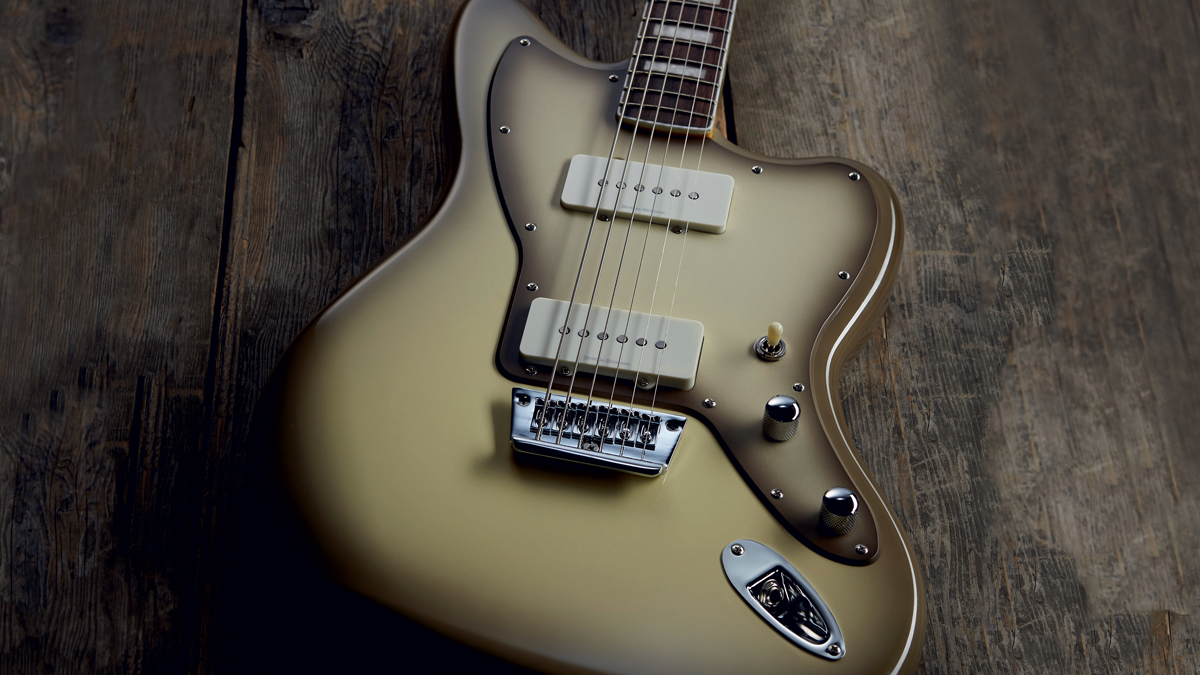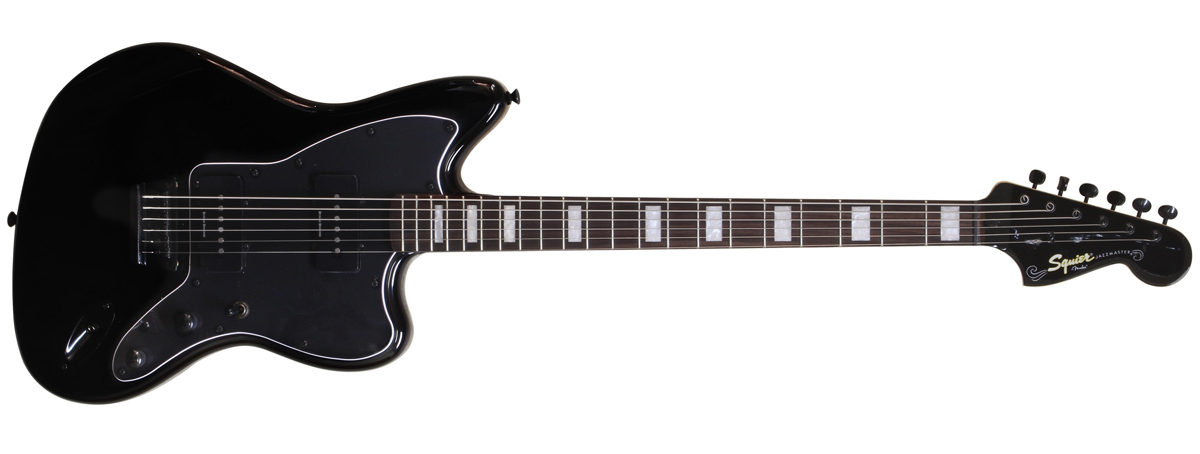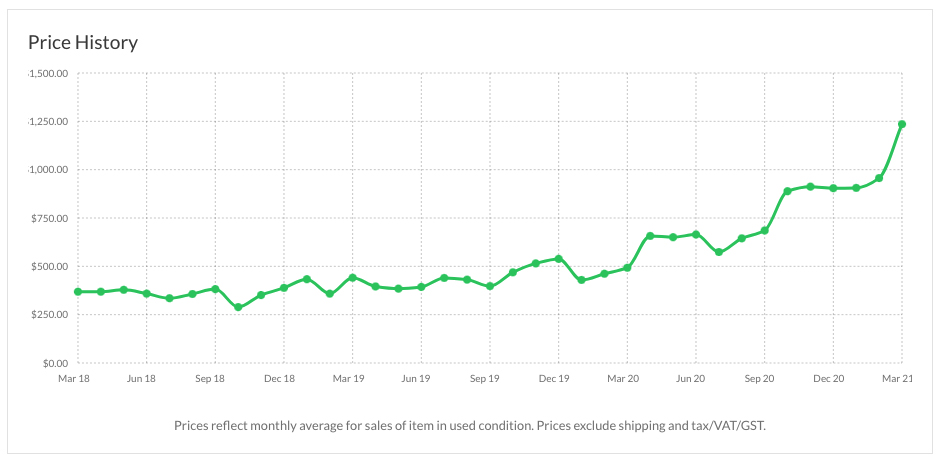How an oddball baritone became one of the most valuable Squier guitars of all time
Launched in 2014 and discontinued in 2019, Fender's affordable Vintage Modified Baritone Jazzmaster is now selling for upwards of $2,000 on the used market – we investigate why

Back in 2014, Fender was riding the wave of a baritone guitar renaissance. After winning guitarists over with reasonably priced Blacktop Baritone Telecaster and Bass VI models in the years prior, it launched its most affordable extended-range guitar yet, the $449 Squier Vintage Modified Baritone Jazzmaster.
At the time, reaction was mixed: the huge-even-for-a-baritone 30” scale length and Duncan Designed pickups had some guitarists drooling over the tonal possibilities, but Fender’s eternally divisive Antigua Burst finish caused others to avert their eyes.


Accordingly, Fender relaunched the model at NAMM 2017, equipping it with an all-black finish and hardware, and some minor spec tweaks. Two years later, the Indonesia-built model was discontinued, along with the rest of the Vintage Modified line.
Yet something strange happened in the years following the model’s demise. Not only is the Baritone Jazzmaster now extremely hard to get hold of, both Antigua and black examples command prices of up to $2,000 and above, with mint examples routinely selling upwards of $1,000.
That’s a remarkable price hike in just two years, and makes this one of the most valuable Squier guitars in existence, comfortably competing with the very first – and much sought-after – Japanese-built models from the ’80s.
Loathe to admit
Normally when we see price rises this extreme, we’d attribute it to an artist of immense, world-conquering stature. Say, John Mayer using the previously maligned Ibanez TS10 Tube Screamer, or Jack White and Dan Auerbach igniting demand for pawn-shop guitars.
But what’s most remarkable about this shift is that it can be traced back to one resourceful metal band from the UK.
Get The Pick Newsletter
All the latest guitar news, interviews, lessons, reviews, deals and more, direct to your inbox!
Hailing from Liverpool and formed in 2014 – the same year the Baritone Jazzmaster was launched, no less – Loathe fuse the unrelenting bombast of metalcore with melodic shoegaze and progressive influences to devastating effect. But what caught guitarists by surprise was the fact that the band’s Erik Bickerstaffe and Connor Sweeney were wringing their crushing, guttural tones from the cheapest baritones on the market.
A 2017 playthrough by Bickerstaffe put the Squier Baritone Jazzmaster on the map, and in the years since, interest in the model has only grown, accelerated by the release of Loathe’s landmark second album – and one of our favorites of 2020 – I Let It In and It Took Everything, in February of last year.

Indeed, if you look at the used market’s price history on Reverb.com, you can see a sharp rise in the months that followed: a perfect storm of renewed interest, the end of the Baritone Jazzmaster’s production and a pandemic-induced spike in guitar sales.
YouTube escalated the hype, of course. It’s filled with players who snapped the model up to nail Loathe’s tones – including djent-keen YouTuber Andrew Baena, who bought the same Baritone Jazzmaster twice.
Even YouTube guitar historian Trogly’s Guitar Show referenced the Liverpudlian metalcore outfit when assessing the baritone’s escalating prices in April 2020. Back then, models were going for a comparatively affordable $400 to $800 – so we can likely thank Trogly for another jump in value.
Yet despite today’s dramatic price hikes, the Bari Jazz currently sits at #2 on Reverb’s list of best-selling baritone guitars. It’s become so ubiquitous that one recent listing, which ultimately sold for $2,099, led with the description, “The one and only.”
Life begins at 30
A big part of the model’s attraction comes from its mammoth 30” scale length – the same as the octave-below-standard-tuned Fender Bass VI. Most current-production baritones top out at 28”, but those extra couple of inches allow for remarkable tuning stability even with ultra-low tunings – something Loathe’s Bickerstaffe and Sweeney employ to great effect.
“We tune to E on a 30-inch scale baritone, but we keep the bass in standard tuning so it locks in so much,” Bickerstaffe told Punktastic. “It’s less of that crazy low end and gives you more audible frequency. It just moulds better and creates a distinctive sound.”
Recent Loathe tracks have been known to go as low as C#, using string gauges as heavy as .105, so it’s fair to say the Baritone Jazzmaster can handle just about anything you can throw at it.
It’s also notable that, aside from a few bumps and bruises and the aforementioned string gauges, the Loathe boys’ models are entirely stock.
Single coils for gut-rumbling metal? You betcha: the Baritone Jazz’s high-output, Duncan Designed singles have proven to provide a distinctive, cutting attack when paired with bucketloads of gain.
’tone-seeking
- The best baritone guitars: including the top baritone guitar for metal
So, if you want a budget, XL-scale baritone, but can’t afford inflated Baritone Jazzmaster prices, what are your options?
For starters, Bickerstaffe and Sweeney have been sighted playing two other budget baritones in a recent playthrough: the 29.75”-scale Gretsch G5260 Electromatic Jet Baritone and 30” SubZero Rogue VI Baritone, an own-brand model from UK retailer Gear4Music.
Another option is Phoebe Bridgers’ fave, the Danelectro ’56 Baritone, whose scale also clocks in at 29.75”.

If you’ve gotta have that Fender lineage, your best bets are the recently discontinued 27”-scale Squier Paranormal Baritone Cabronita, while the Squier Classic Vibe Bass VI is still in production at the time of writing. And you can convert any Fender model into a 27” baritone by bolting on one of the company’s Sub-Sonic Baritone necks.
As for the chances of the elusive Baritone Jazzmaster returning, curiously enough, Bickerstaffe expressed a desire to work with Fender on a signature guitar last year.
Given the model’s sky-high demand and ability to act as a gateway guitar for drop-tuning metal fans, we reckon it could prove a sage business decision. Your move, Fender…

Mike is Editor-in-Chief of GuitarWorld.com, in addition to being an offset fiend and recovering pedal addict. He has a master's degree in journalism from Cardiff University, and over a decade's experience writing and editing for guitar publications including MusicRadar, Total Guitar and Guitarist, as well as 20 years of recording and live experience in original and function bands. During his career, he has interviewed the likes of John Frusciante, Chris Cornell, Tom Morello, Matt Bellamy, Kirk Hammett, Jerry Cantrell, Joe Satriani, Tom DeLonge, Ed O'Brien, Polyphia, Tosin Abasi, Yvette Young and many more. In his free time, you'll find him making progressive instrumental rock under the nom de plume Maebe.
“It holds its own purely as a playable guitar. It’s really cool for the traveling musician – you can bring it on a flight and it fits beneath the seat”: Why Steve Stevens put his name to a foldable guitar
“Finely tuned instruments with effortless playability and one of the best vibratos there is”: PRS Standard 24 Satin and S2 Standard 24 Satin review













